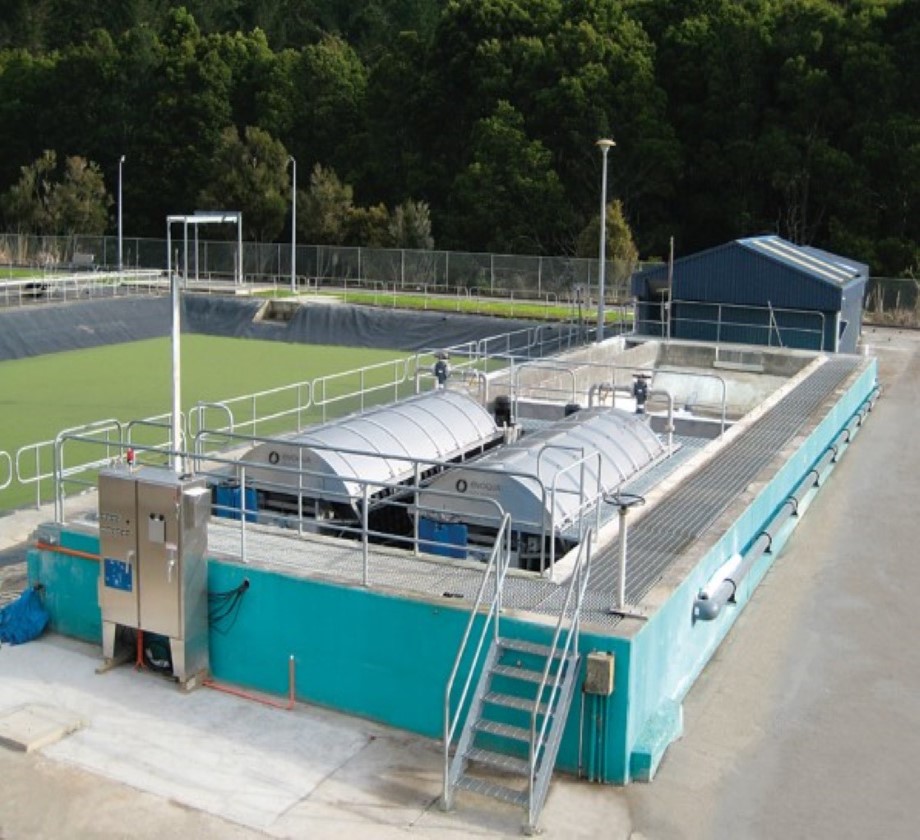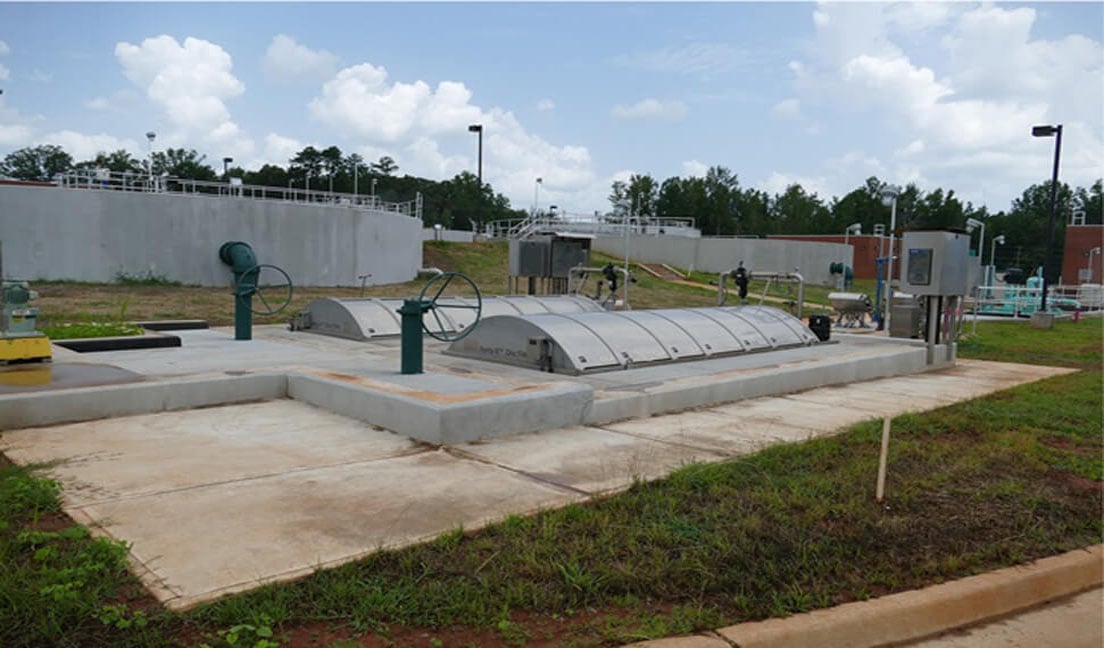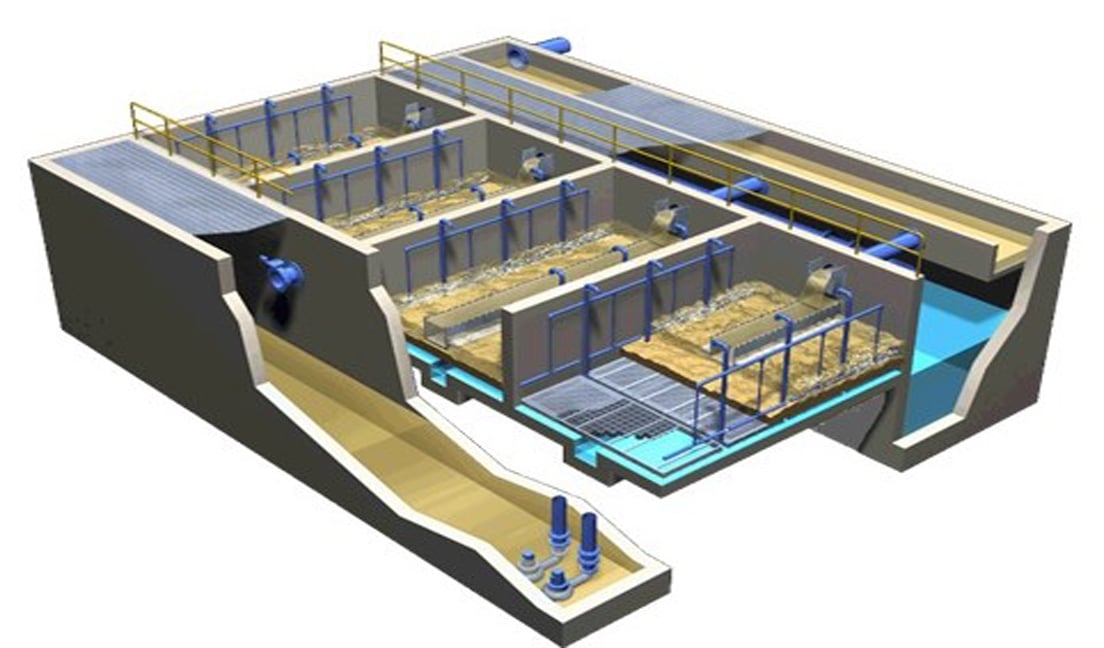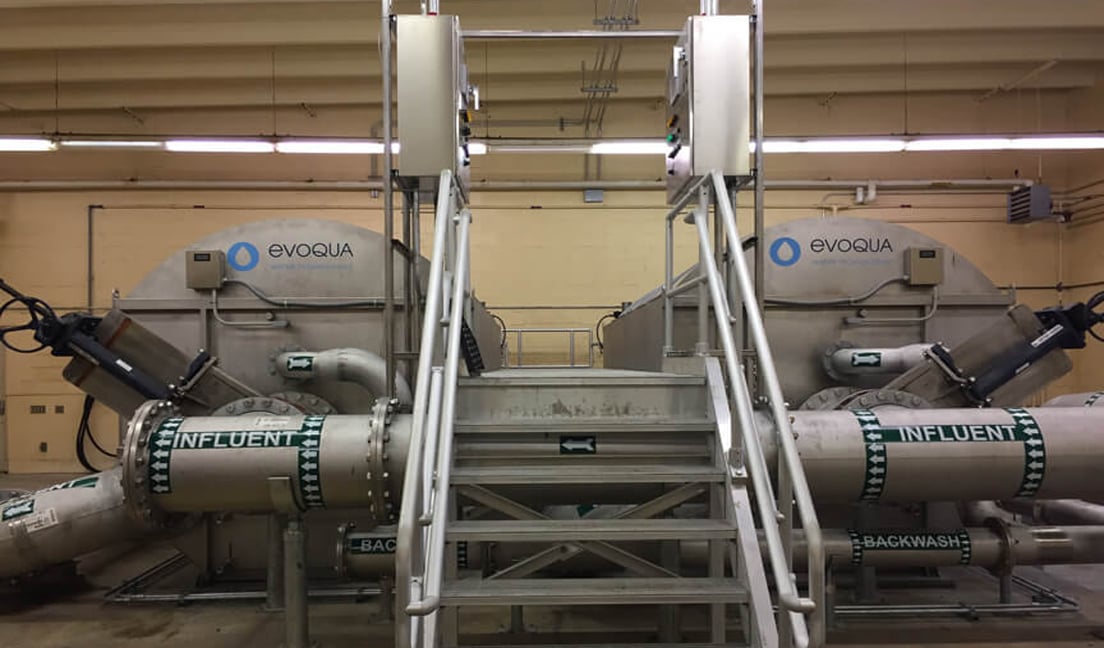Tertiary treatment, also referred to as effluent polishing, is required to improve water quality in the wastewater treatment process before discharge to the environment. The third and final step in the wastewater treatment process, tertiary filtration can be used to remove substances like nitrogen and phosphorus.
Evoqua offers a wide range of tertiary filtration technologies including disc filtration systems and gravity sand filtration systems

Tertiary Wastewater Treatment Process
Advanced systems like carbon adsorption and reverse osmosis are used to remove contaminants that secondary treatment is unable to treat. The tertiary wastewater treatment process consists of the following steps:
- Primary Wastewater Treatment - Solid waste material is physically removed through a series of screens. This is the most basic, initial step of wastewater treatment and takes care of larger components.
- Secondary Wastewater Treatment - Various biological and chemical processes are used to treat wastewater that has been screened for solid contaminants. This process includes removal of biodegradable organic matter (BOD) and total suspended solids (TSS). Typical standards for secondary treated wastewater are a BOD of 25 mg/L or less and TSS of 30 mg/L or less.
- Tertiary Wastewater Treatment - The most advanced wastewater treatment process removes nutrients, suspended solids and organic materials from wastewater so it is able to be discharged safely into the environment.
Most wastewater treatment plants use at least one tertiary filtration system to accomplish coagulation assisted filtration, absolute barrier filtration or nutrient, removal which includes biological denitrification and chemical phosphorus removal. As wastewater is purified to higher degrees by such treatment processes, the treated effluent can then be reused for irrigation, recreational use or water reuse.


